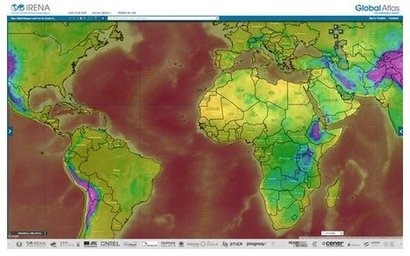
The new tool is the product of collaboration between the International Renewable Energy Agency (IRENA) and the European Space Agency (ESA). It consists of a series of new and freely available gravity anomaly maps which offer a way in which to gauge geothermal potentials around the world.
Since geothermal energy is primarily found underground, it is very difficult to measure. This means that exploration for geothermal energy is expensive, time consuming and risky for investors and governments. The new tool, Global Bouguer and Free Air Gravity Anomaly Maps, enables prospectors to gauge geothermal potentials at minimum risk and minimum cost.
“These maps can help make a strong business case for geothermal development where none existed before” said Henning Wuester, Director of IRENA’s Knowledge, Policy and Finance Centre. “In doing so, the tool provides a short-cut for lengthy and costly explorations and unlocks the potential of geothermal energy as a reliable and clean contribution to the world’s energy mix.”
The maps use ESA satellite gravity measurements to look for certain characteristics unique to geothermal reservoirs, including areas with thin crusts, subduction zones, and young magmatic activity. This in turn helps to determine which areas are most likely to possess geothermal potential, thereby helping to narrow the search for prospectors.
Volker Liebig, Director of ESA’s Earth Observation Programmes, added that this is the first time that ESA’s global gravity data from the Gravity field and steady-state Ocean Circulation Explorer satellite has been used as a tool for geothermal energy site exploration. Mr Liebig went on to confirm that ESA will continue its collaboratin with IRENA to further improve space-based gravity data as a resource for sustainable energy development.
The publication of the maps represents a first step towards developing a comprehensive geothermal prospecting technique with future iterations produced at finer scales, integrating the satellite data locally with terrestrial data to further improve the quality of results. The latest geothermal maps are a part of the Global Atlas portal, a comprehensive repository of global renewable energy resource potential maps which combines 1,000 maps from 67 governments and 50 data centres. The portal provides access to datasets, expertise and financial support in order to help countries evaluate their national renewable energy potentials. Currently, 67 countries and more than 50 institutes and partners contribute to the initiative.
For additional information:
International Renewable Energy Agency (IRENA)

